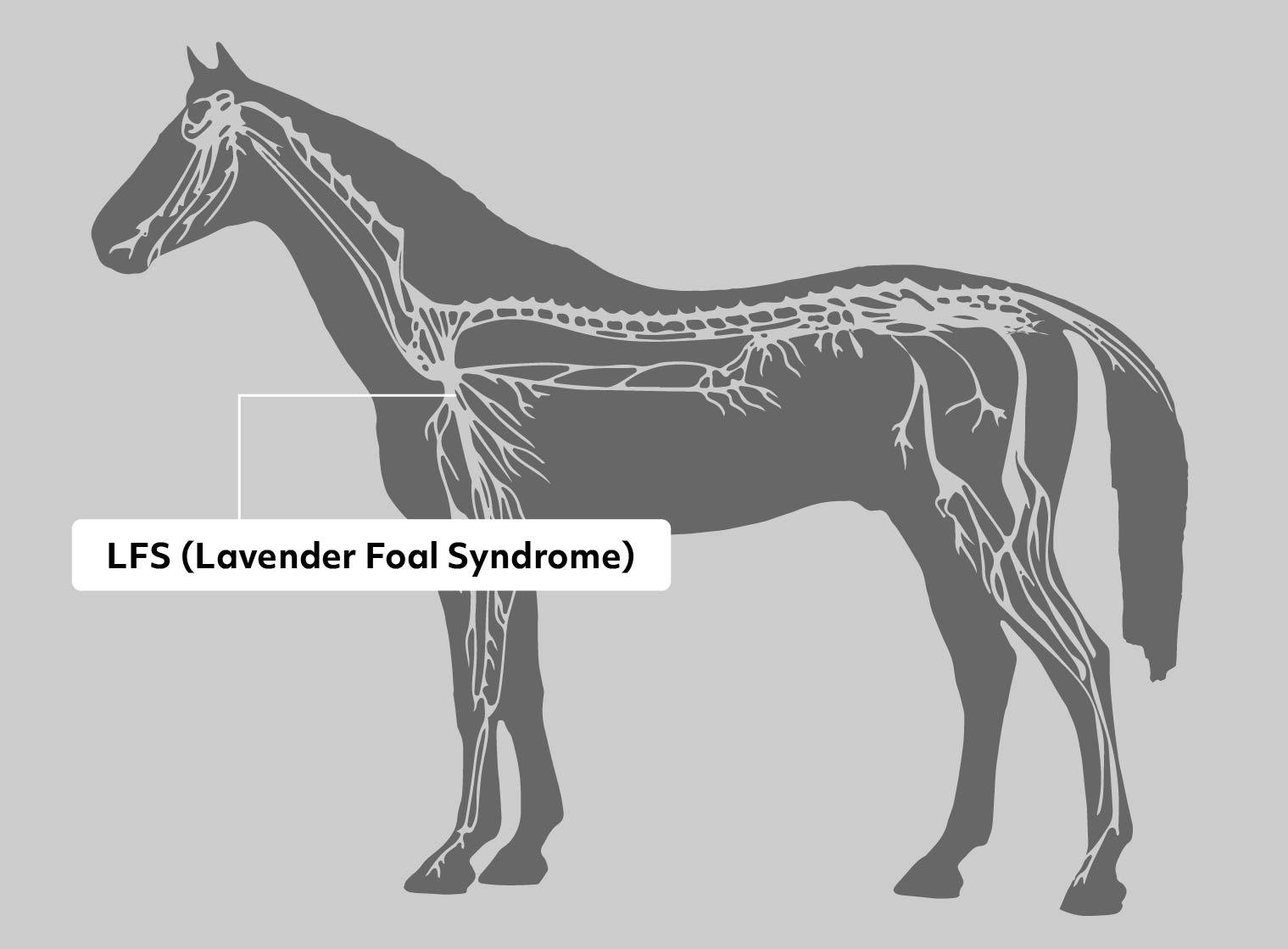Lavender Foal Syndrome (LFS)
Gene or Region: MYO5A
Reference Variant: C
Mutant Variant: -
Affected Breeds: Arabian
Research Confidence: High confidence - Findings reproduced multiple studies
Explanation of Results: lfs/lfs = homozygous for Lavender Foal Syndrome, lethal lfs/n = heterozygous for Lavender Foal Syndrome, carrier n/n = no variant detected
General Description for Lavender Foal Syndrome
Lavender Foal Syndrome (LFS), also known as coat color dilution lethal, is a neurological dysfunction in newborn foals. Symptoms are apparent at birth and include seizures, severe hyper-extension of limbs, neck and back, stiff paddling leg movements, involuntary eye movement and inability to stand or sit upright. The coat usually has a dilute color that ranges in shade from silver to a pale lavender/pink. As there is no treatment, affected foals are humanely euthanized. LFS is an autosomal recessive condition, thus a horse must inherit two copies of the allele (LFS/LFS) to show any signs. Horses with only one copy of the allele (LFS/n) are known as carriers due to their ability to produce affected foals.
Gene Information
MYO5A functions as part of a trafficking complex that serves to move important molecules in pigment cells and neurons. Mutations in humans result in Griscelli syndrome, which is characterized by dilute hair and neurological dysfunction. The LFS mutation is a single base deletion that results in a premature stop codon, and thus a truncated protein.
References
Brooks SA et al., “Whole-genome SNP association in the horse: identification of a deletion in myosin Va responsible for Lavender Foal Syndrome.” (2010) PLoS Genet. 6: e1000909. PMID: 20419149
Gabreski NA et al., “Investigation of allele frequencies for Lavender foal syndrome in the horse.” (2012) Anim Genet. 43: 650. PMID: 22497275
Tarr CJ et al., “The carrier prevalence of severe combined immunodeficiency, lavender foal syndrome and cerebellar abiotrophy in Arabian horses in South Africa.” (2014) Equine Vet J. 46: 512-4. PMID: 24033554
More Horse Health
"Warmblood" Fragile Foal Syndrome
"Warmblood" fragile foal syndrome (FFS) is a connective tissue disorder resulting in joint laxity and extremely thin skin that is only loosely connected to the body. The skin is easily torn, resulting in lacerations, hematomas, and seromas across the foal. Affected foals are euthanized shortly after birth.
Androgen Insensitivity Syndrome
Androgen Insensitivity Syndrome (AIS) is an X-linked disorder of sexual development resulting in a female horse with XY chromosomes. Horses with AIS exhibit stallion-like behavior such as agression toward other horses, Flehman response and vocalization toward cycling mares.
Cerebellar Abiotrophy
Cerebellar Abiotrophy (CA) is a degenerative neurological disorder, due to the death of neurons in the brain. Symptoms (head tremors, lack of coordination, wide stances, exaggerated gain, difficulty rising and startling easily), typically appear in foals between six weeks and four months of age.
Chronic Idiopathic Anhidrosis Risk
Chronic Idiopathic Anhidrosis Risk (CIA) is the inability to sweat in response to increased body temperature, (AKA "non-sweater"). This condition is dangerous and sometimes life-threatening for horses, who rely on sweating for 65-70% of their temperature regulation.
